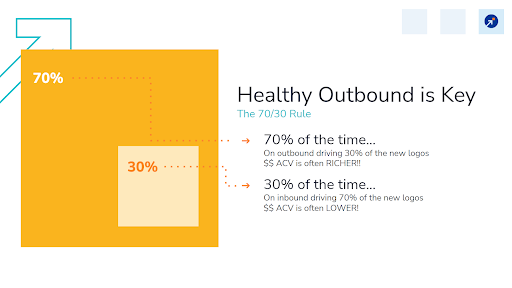When mid-size businesses are preparing to expand, they typically encounter one of two scenarios: they either make the mistake of hiring too hastily, squandering valuable resources on unsuitable staff members, or they limit their growth by neglecting to invest in suitable personnel and technology.
Although high growth can be a thrilling time for business owners, establishing a scaling strategy is essential for sustaining business growth. It’s best to seek out a sales scaling approach that is in harmony with your business plan and provides a solid foundation. Your scaling strategy should be designed to support your company’s fast growth, revenue objectives, sales pipeline growth, and business model.
Challenges and Mistakes When Scaling Sales Team
When scaling a sales team in a B2B organization, sales leaders face various challenges and mistakes. Some common ones include:
- Hiring the wrong people: One of the most significant challenges sales leaders face when scaling their sales team is hiring the right people. Hiring the wrong people can lead to a significant waste of time and resources and a decrease in overall sales performance.
- Lack of structure and processes: When scaling a sales team, it’s crucial to establish a structured approach and efficient processes for managing and monitoring the team’s performance. A lack of structure and processes can lead to inefficiencies, inconsistency, and confusion among team members.
- Inadequate training and development: Sales leaders must ensure that their sales team members receive adequate training and development opportunities to succeed. Without proper training and development, sales team members may struggle to reach their full potential and achieve sales goals.
- Incorporating a Q&A feature in virtual meetings can enhance communication, allowing team members to clarify doubts and engage more effectively with the training material.
- Poor communication: Effective communication is essential when scaling a sales team. Sales leaders need to communicate clearly and regularly with their team members to set expectations, share feedback, and address concerns.
- Focusing solely on revenue: While revenue is undoubtedly an essential metric for any sales team, focusing solely on revenue can lead to short-term thinking and neglect of other critical metrics, such as customer satisfaction, retention, and lifetime value.
- Lack of alignment with the rest of the organization: Sales leaders need to ensure that their sales team is aligned with the rest of the organization, including marketing, customer service, and product development. A lack of alignment can lead to miscommunication, inefficiencies, and lost opportunities.
- Failure to adapt to changes in the market: Sales leaders need to stay up-to-date with changes in the market and adjust their sales strategy accordingly. Failure to adapt to changes can result in missed opportunities and decreased sales performance.
In summary, sales leaders must be mindful of these challenges and avoid making these mistakes when scaling a sales team in a B2B organization. By doing so, they can set their sales team up for success and achieve their sales goals.
Alternatively, partnering with a B2B sales outsourcing agency can be a great way to scale your sales team while bypassing challenges such as hiring, training, and process development. When considering outsourcing, ensure the partner you choose aligns with your sales goals and your company’s values.
Balancing the Inbound and Outbound Time is Crucial
Balancing inbound and outbound sales time is essential for achieving productivity, maintaining focus, and achieving a healthy sales pipeline. Inbound time refers to the sales time spent reacting to incoming lead communications such as contact forms, emails, phone calls, and messages. Outbound time is the time spent proactively initiating conversations and prospecting.
Failing to balance inbound and outbound time can result in a reactive work style that is inefficient, unproductive, and can cause burnout. If you spend too much time reacting to incoming leads, you may miss out on new business opportunities. On the other hand, spending too much time on outbound can lead to neglecting incoming leads, causing delays in responding to prospective customers, and can burn out your sales team.
Balancing inbound and outbound time can help you to prioritize tasks, manage your workload effectively, and stay focused. You can achieve this by setting specific time blocks for inbound and outbound tasks. It’s also important to take breaks, prioritize self-care and avoid overworking, which can negatively impact your mental and physical well-being. By balancing inbound and outbound sales time, you can achieve a healthier work-life balance, increase productivity, and achieve your goals more efficiently.
Don’t Rush to Scale
Before rushing to scale your sales team after improving your efficiency, take a little time to be sure you can continue to feed qualified accounts to your team. Your first attempt at your ICP and usage of intent data might target too small a segment to keep your sales team consistently fed with fresh leads.
This is where the importance of a business plan comes into play. A well-structured business plan can help identify the right market segments and define the best strategies to reach them. It also provides a roadmap to align your team’s efforts and keep everyone on the same page.
Or, you might be contacting the wrong personas or verticals for success. You could be trying to talk to the CEO when you should be talking to the Director of IT. Maybe you’ve had success in healthcare previously, but there are not enough similar healthcare accounts to feed your sales team long-term.
Don’t be afraid to experiment with new approaches if one well is drying up quickly. You want to have a priority list, so even if you hit a dry spell of top-qualified accounts with the intent to buy, you still have the next best contacts and accounts for your sales team and outbound prospecting.
Using the 70/30 Model to Improve Sales Pipeline Efficiency
Our 70/30 rule is the key to healthy outbound/inbound sales time. 70% of the time is outbound focused resulting in 30% of our new customers. 30% of the time is spent on inbound prospecting which brings in about 70% of customers. But when you get it to revenue, it’s almost an even split 50/50.
The reasoning is that outbound prospecting can be highly intentional. Fewer outbound prospects close, but their lifetime value tends to be higher because we get to pick the best-fit prospects.
Expect your sales team to spend 30% of their time on inbound. Inbound will likely account for 70% of your business. Then 70% of your sales time should be spent on outbound to acquire the last 30% of your business.

You don’t want to spend too much time on outbound and leave inbound prospects waiting for a follow-up. You also don’t want your team only chasing inbound leads and ignoring the results outbound can get. By following the 70/30 rule, you’ll be able to maximize the results you can get from both inbound and outbound.
Once you have a sales qualification process, accurate contact data, a sales playbook, and a balanced plan between outbound and inbound, you can scale your sales team. As you do so, we’ll cover a handful of common mistakes that can pop up.
How you Scale Matters – Quantitative or Qualitative
Scaling can be both terrifying and exhilarating because, once your company embarks on this path, it becomes an ongoing process. You can either increase the number of sales reps or take a 70/30 approach and improve efficiency.
We can use the 70/30 rule for scaling our sales team. If all of our reps are spending 70% or more of their time on inbound, we need to hire more because we’re leaving market share on the table that could be acquired through outbound prospecting. If we can’t hit the 30% inbound level, we need to refrain from additional sales hires and focus on how marketing can help it that goal.
Carefully analyze your sales data, follow the 70/30 approach, and refine existing processes to develop a healthier sales pipeline. By achieving a balance between these elements and outbound/inbound leads, you can scale your business without over or under-hiring your sales team.





